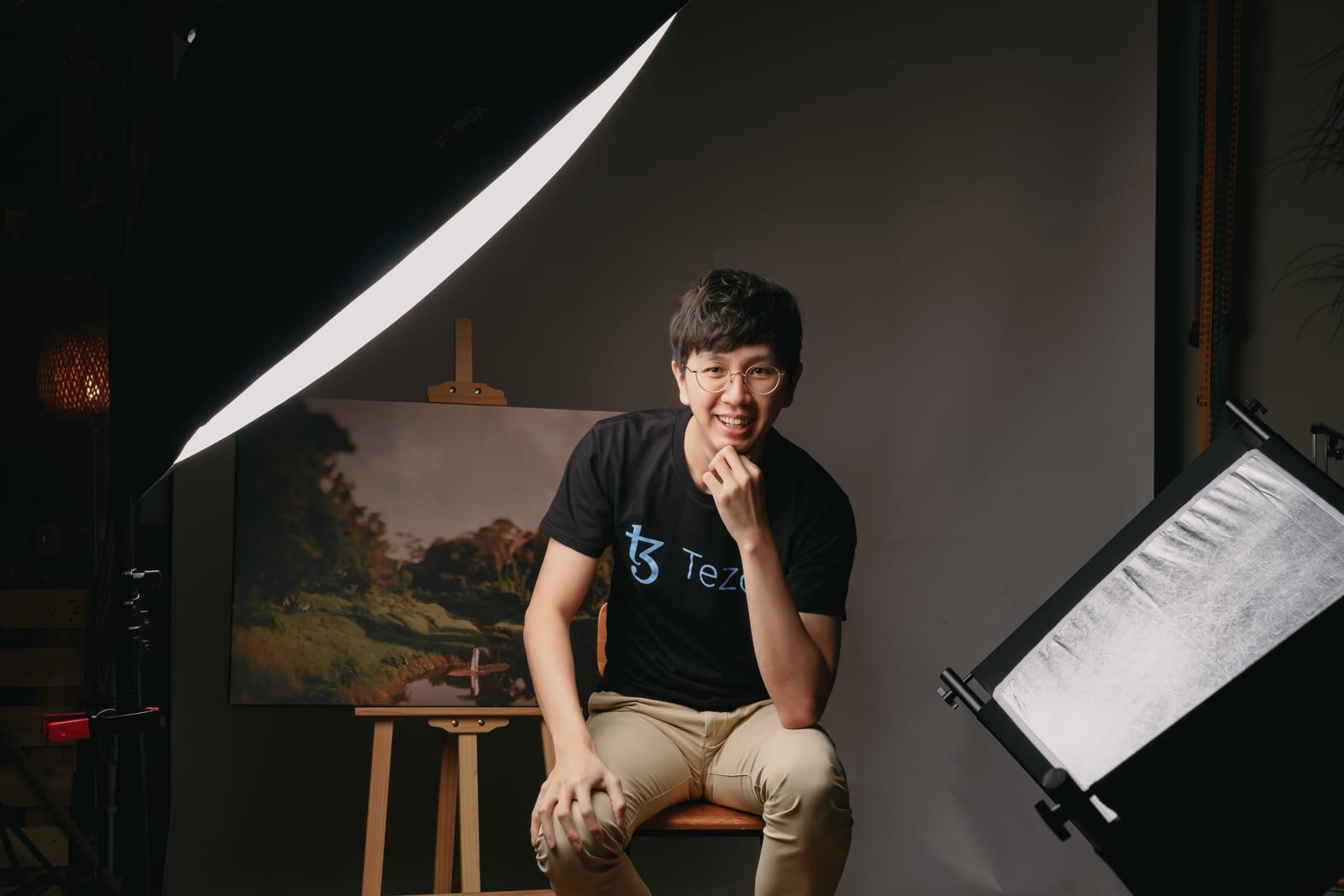IN
IN
JPN
EN
Join Our Communities

In his GeckoCon keynote, David Tng, head of growth at TZ APAC, revealed fakes and misattributed artworks are estimated to account for nearly half of the global art market. This is because authenticating art is all about human judgment, and human judgment is prone to error.
“Art authentication services are a multi-billion-dollar industry, and it has not been able to solve this problem,” he said. “That is until the blockchain came along.”
The blockchain allows for traceability, with all artists and developers on the chain having visibility into the history of transactions and the people collecting the artwork, said Tng. “The community is very collaborative.”
It’s possible to tokenize any asset, even in the physical world, but at present, a lot of NFTs are digital goods. Being on a decentralized platform like Tezos allows people to co-create applications and assets, said Tng, pointing to race car manufacturer McLaren, which recently started a campaign on the Tezos blockchain allowing people to collect NFT parts with the goal of constructing their own virtual vehicle. This leads to an immersive experience for fans and collectors alike.
Influencers like Snoop Dogg and Mike Shinoda have also branched out into creating virtual collectibles on the Tezos blockchain. “They’ve evolved from a simple collectible to a sort of membership pass where there’s a thriving community behind it,” notes Tng. “And it’s being used as a flex good to establish status on crypto Twitter. Twitter is even reported to be working on verifying these collectibles for use as a profile picture.”
NFT art also resolves the issue of royalties, when artists are locked out from the revenue created by secondary markets. With the creation of art as an NFT, artists can receive royalties on the secondary market. “It allows them to sleep at night, not being pressured to keep pushing their artwork or to make ends meet while their art is already trading at thousands of dollars.
“And this system rewards participation, allowing artists to make a passive income on their work,” he continues.
The blockchain has also given rise to generative art, said Tng, art created using a script. It’s a new form with many possibilities, but when artists use a script, they need to ensure it does not produce any unappealing generation.
“This is a whole new medium, and it requires artists to pick up coding, to learn how to mint NFTs and to promote themselves in a digital setting.”
Over the last twelve months, TZ APAC has collaborated with artists’ communities in Indonesia, China, Korea, and many other places to create NFT workshops led by artists for artists.
“It’s better to hear from artists who believe in NFTs than from us. These workshops educate and train artists to explore new mediums and increases their accessibility.“
According to Tng, art and community building counts for nothing if it is unsustainable. NFTs have gotten a lot of bad press regarding carbon emissions because minting an NFT on Ethereum generates around 100 kg of carbon dioxide.
But ‘real world’ fine art is also carbon-intensive, observing that a piece of fine art shipped by air freight from Paris to Hong Kong will produce around 190 kg of emissions. “This signifies shipping fine art is a very carbon-intensive process, but if you were to mint an NFT on Tezos and transfer it, it would only be 0.1 grams of carbon,” he said.
“Art,” concluded Tng, “might be in the eye of the beholder, but in the world today, art might also be in the eye of NFT holders.”